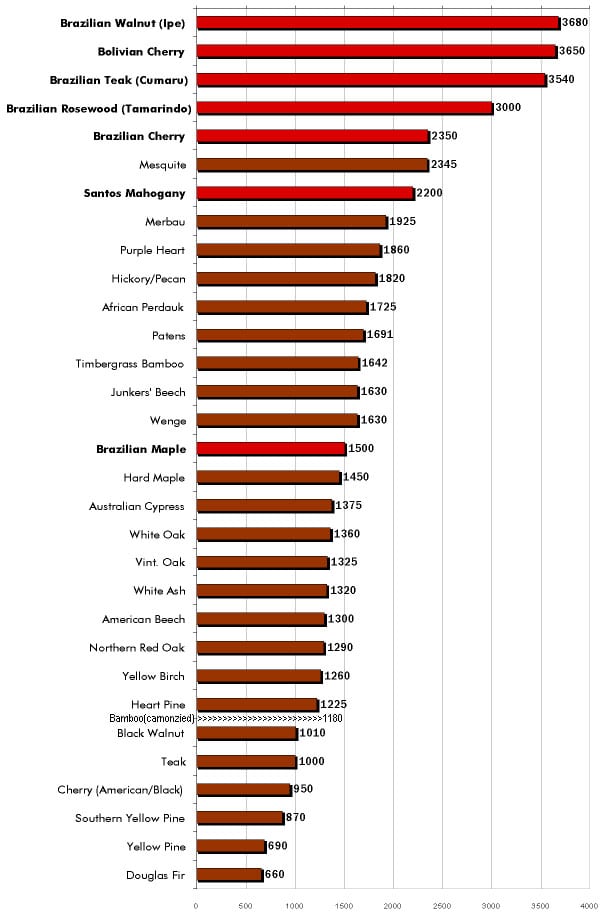What is the Janka Hardness Scale?
According to The Wood Database, “This number is incredibly useful in directly determining how well a wood will withstand dents, dings, and wear—as well as indirectly predicting the difficulty in nailing, screwing, sanding, or sawing a given wood species.”
It measures the force required to embed an 11.28 millimetres (0.444 in) diameter steel ball halfway into a piece of wood. The hardness of wood will always vary depending on the direction of the wood grain.
This chart may be helpful to determine which woods are stronger and considered high-end, such as Brazilian Walnut, Bolivian Cherry, Brazilian Teak (Cumaru), Brazilian Rosewood (Tamarindo), Brazilian Cherry, Mesquite, Santos Mahogany, Merbau, Purple Heart, Hickory/Pecan, Africian Perdauk, Patens, Timbergrass Bamboo, Junkers Beech, Wenge, Brazilian Maple, Hard Maple, Austrailian Cypress, White Oak, Vintage Oak, White Ash, American Beech, Northern Red Oak, Yellow Birch, Heart Pine, Bamboo (camonzied), Black Walnut, Teak, Cherry (American/Black), Southern Yellow Pine, Yellow Pine and Douglas Fir.

